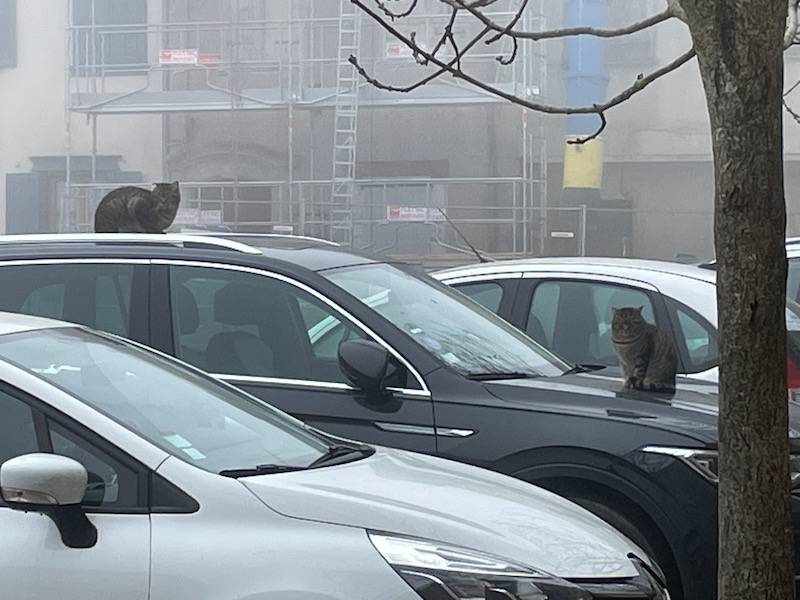Our Blog - Saint-Félix-Lauragais, France
The small town of Saint-Félix-Lauragais is less than an hour from Toulouse, and it made a nice little stop on the way to the Mediterranean. The population decreased from 1850 to 1970 from a high of near 3,000 down to 1100, and then it has been increasing or relatively flat since, to around 1300 people. The area has been populated since the Neolithic period, with some prehistoric furniture found in the town which can be seen at one of the museums in Toulouse. Previously known as Saint-Félix-de-Caraman, the Cathars met here in 1167 under the presidency of Pope Nicetas, bishop of the Bogomils. The town changed to the current name in 1921. Since 1972, the village has hosted the Cocagne festival during the weekend of Easter. The word "cocagne" means a couple of things in French. One is in the phrase "Pays de Cocagne", which means "Land of Plenty, or Land of Milk and Honey (depending on the translation). It is also the name of the dried ball of crushed leaves of the woad plant, which then is crushed and used to make the pastel blue color that Toulouse is famous for. To make the blue dye, the plant is crushed, then formed into a ball and dried/hardened into a ball (called a cocagne). It is then crushed and rehydrated to make the dye. The drying step made it easier for storage and transportation.
Now, we know that it is still winter, which makes it the perfect time to head to the beach. The weather is perfect for Lucy to run and play on the sand, and there aren't many people on the beach. However, we sometimes get weather like this along the way! We weren't able to see the countryside due to the fog.
Our first stop was the Église Saint-Félix, which was started as a collegiate church for the chapter of canons that Pope John XXII founded here in 1317. The church is built of stone in the Southern Gothic style. The bell tower has the typical "Toulousan" shape, octagonal on 3 floors (not that you can really see it with all of the fog).
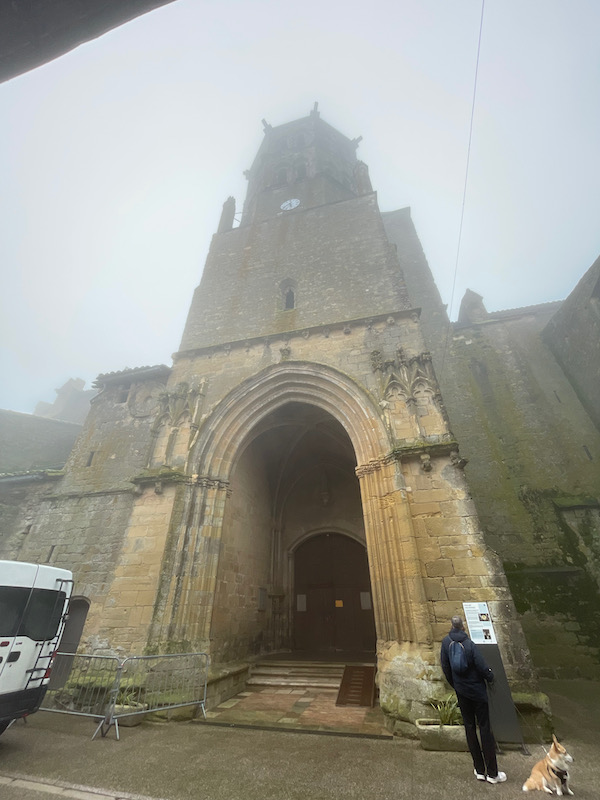
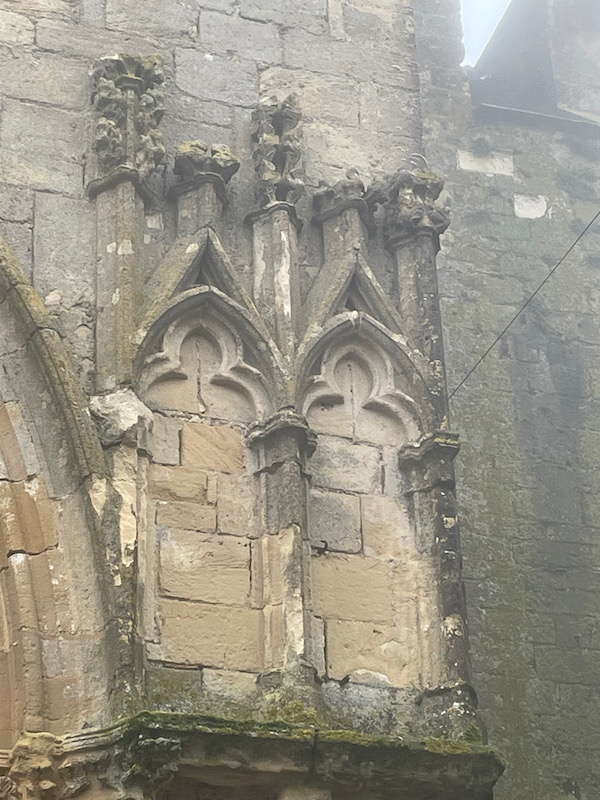
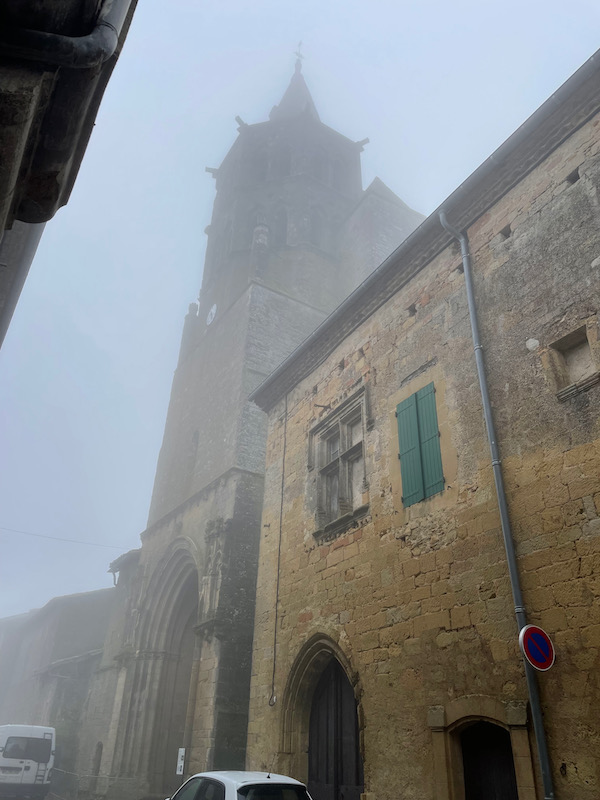
Inside was quite interesting, with some walls that were nicely painted and others where the painting has been pretty much destroyed. There are windows along one side but trompe-l'œil windows on the other side where there are buildings up against the side of the church so windows were not possible. In the beginning of the 18th century, the main altar was moved back into a small chapel, which now houses the cross mounted on a small hill of rocks. It was then deemed to be too small and a marble high altar was placed in front of it with angels on either side.
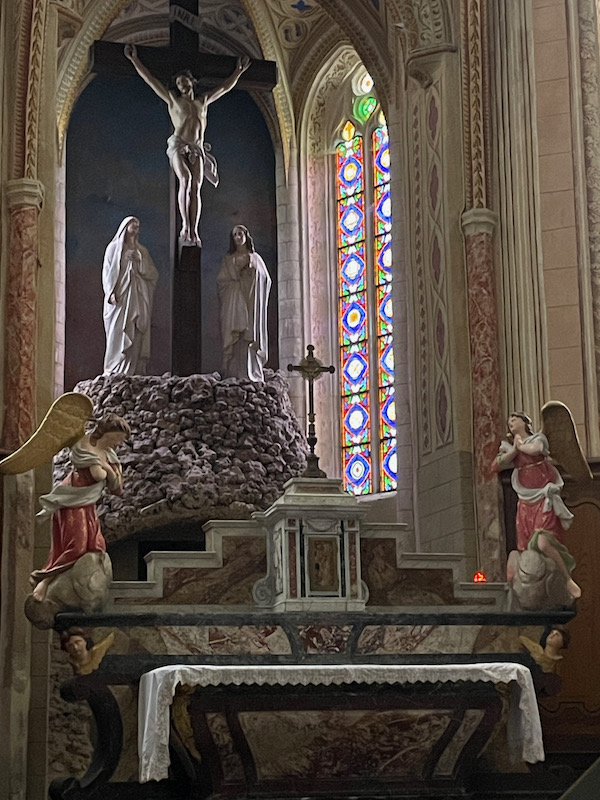
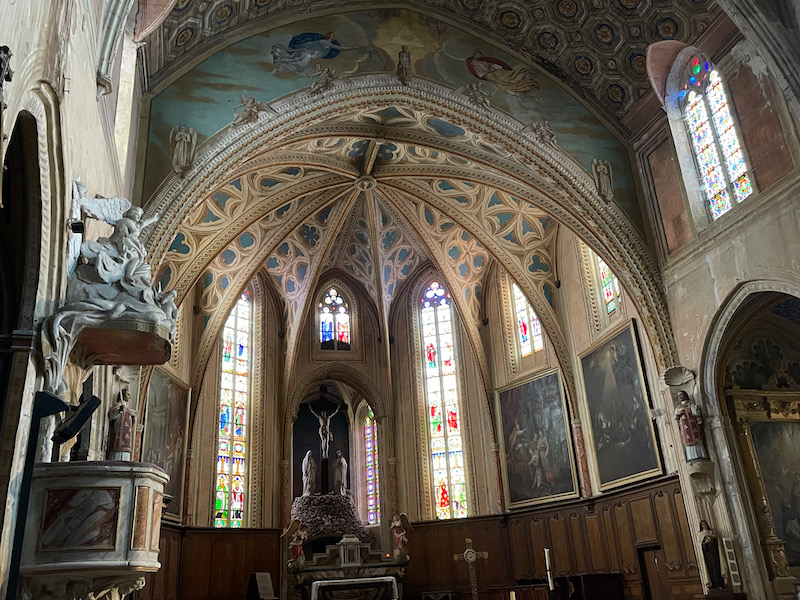
A few pictures with the painted interior, which includes the dome over the high choir, the small all between the choir and the nave (which is taller than the choir), and lastly, the nave.

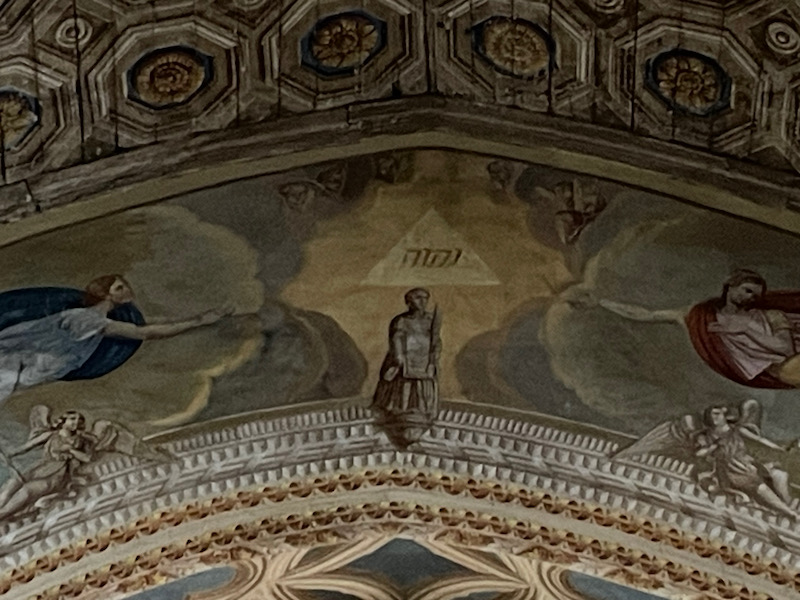
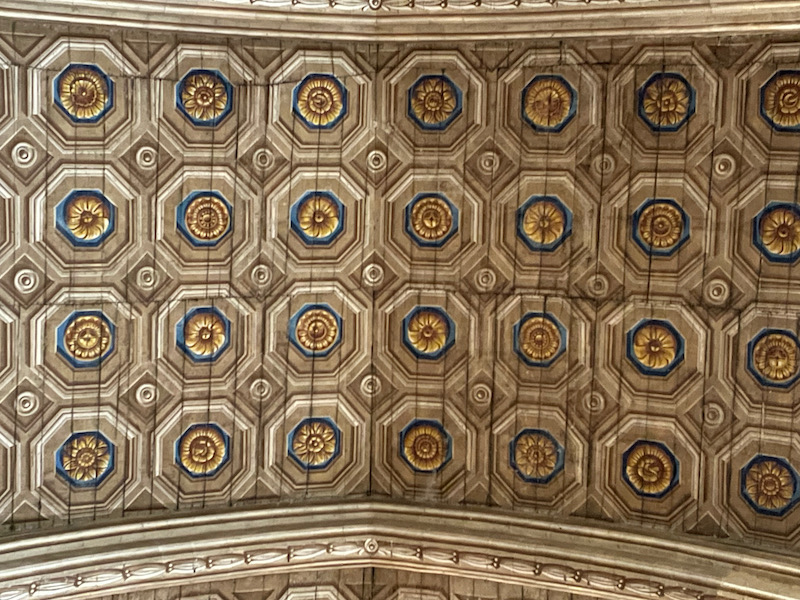
The organ dates from the 17th century, and was restored in 1920 and 1953. The case was made in 1779 and is in the Louis XVI style. It decorated with floral garlands and adorned with country attributes, cherubs gilded with fine gold. It sits above a highly-decorated arch over a niche that houses the baptismal font.
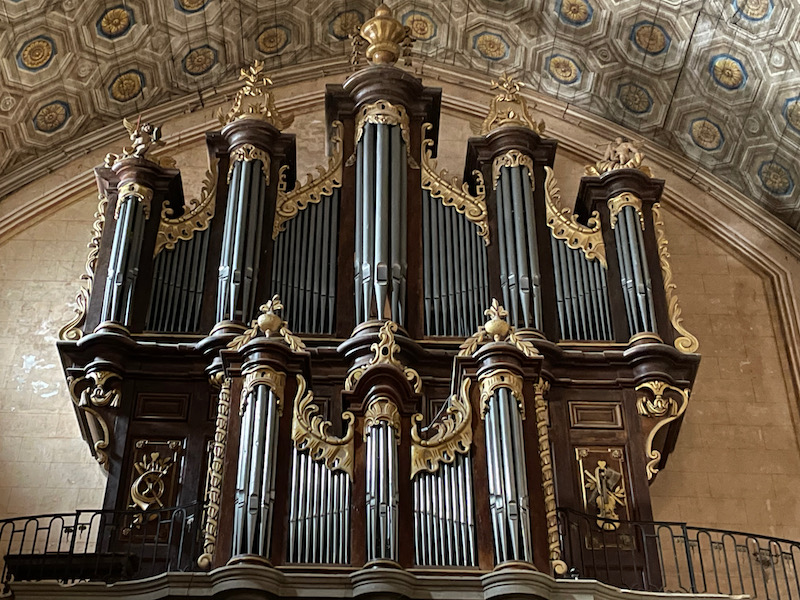
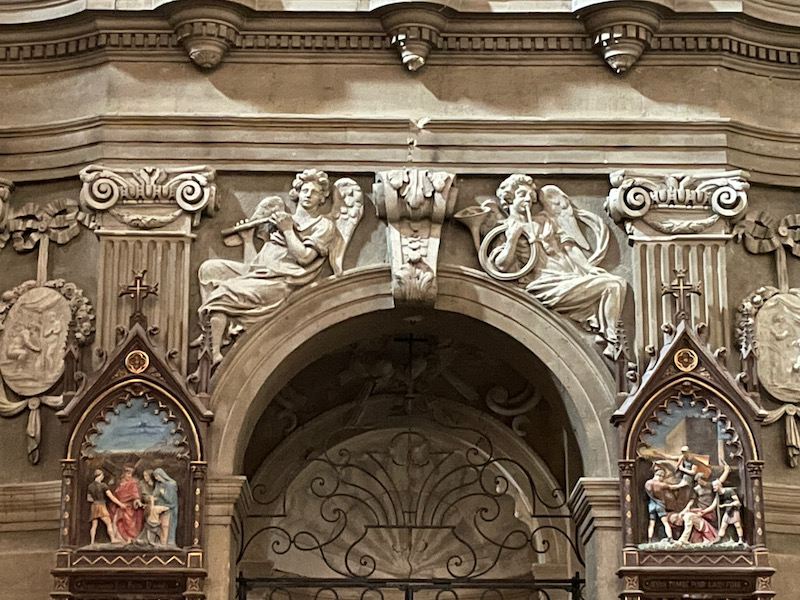
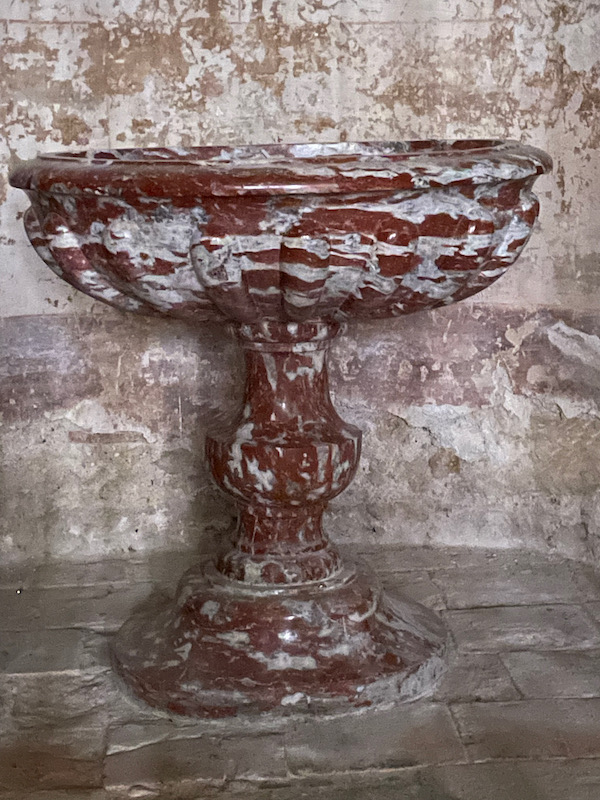
These next pictures (I hope) give more examples of the painting and trompe-l'œils. This is one of the more elaborate side chapels, you can see the painting and then the baroque-style column over on the right. The 2nd picture show a close-up of a different side chapel, with the colorful painting of the arches. The next 2 pictures show some really nice trompe-l'œils, which look like carved stone or stucco work but are really just paintings.
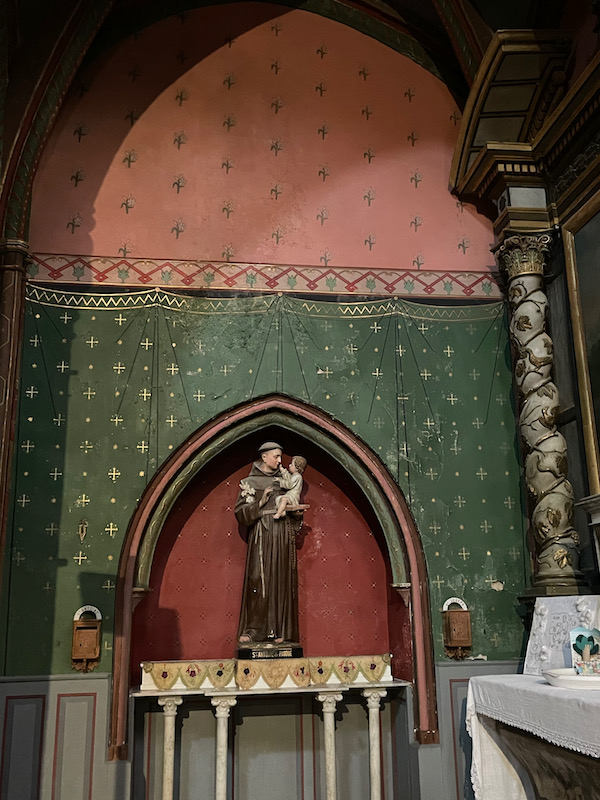
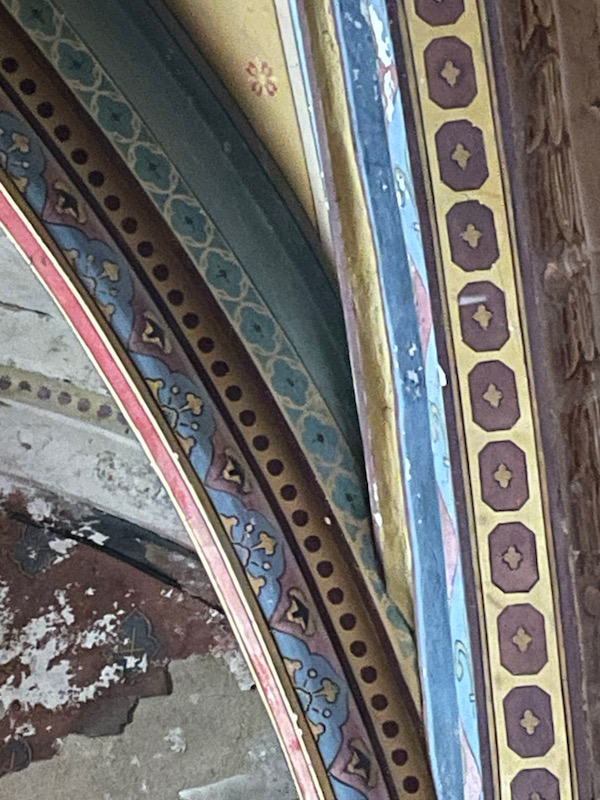
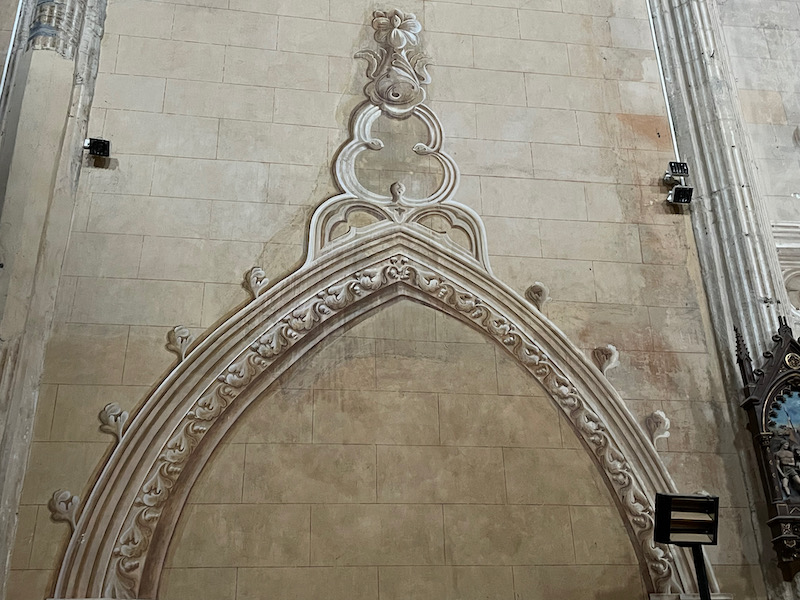
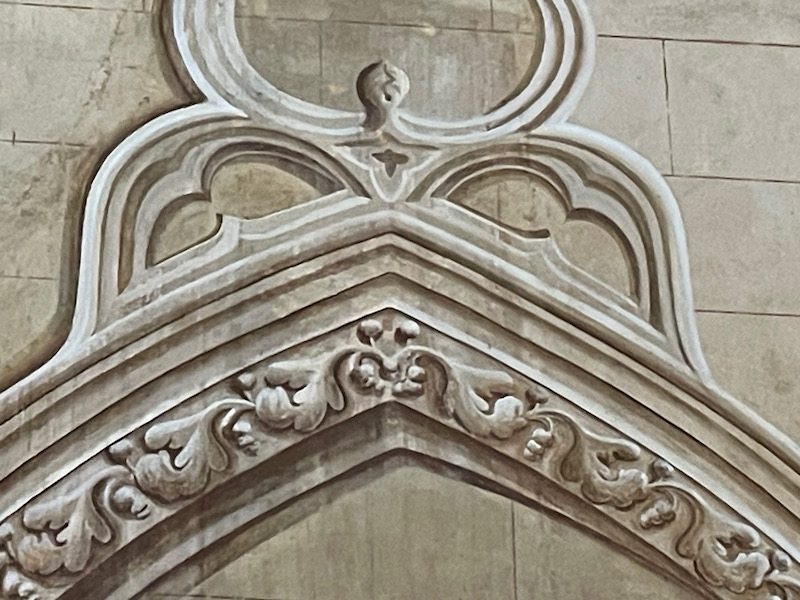
Around the main square are some nice half-timbered houses, as well as some from the 17th century that are in stone with a bit of Italian decoration along the top. This second house was the birthplace of a French composer named Déodat de Sévereac in 1872. Don't worry if you have never heard of him, neither had we!
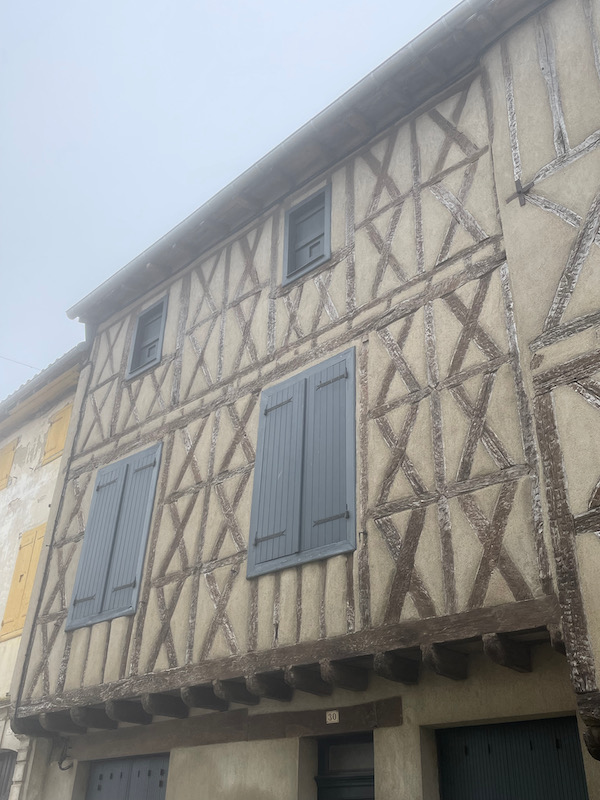
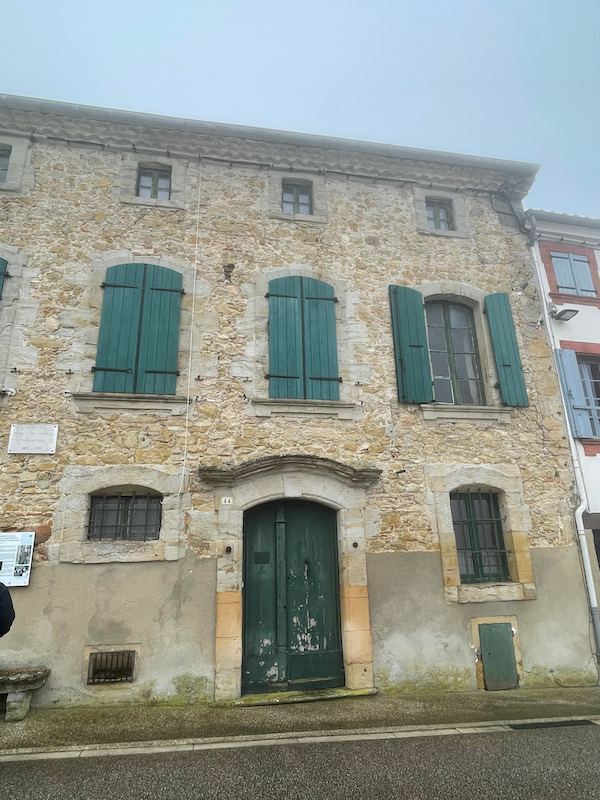
Like many medieval villages, the central square houses the market halles. The hall is a Middle Ages building with exposed beams and octagonal wooden pillars. It was built in the 13th century and in 1557, the common house was erected next to it, which was topped by a statue of the Virgin Mary in 1862.
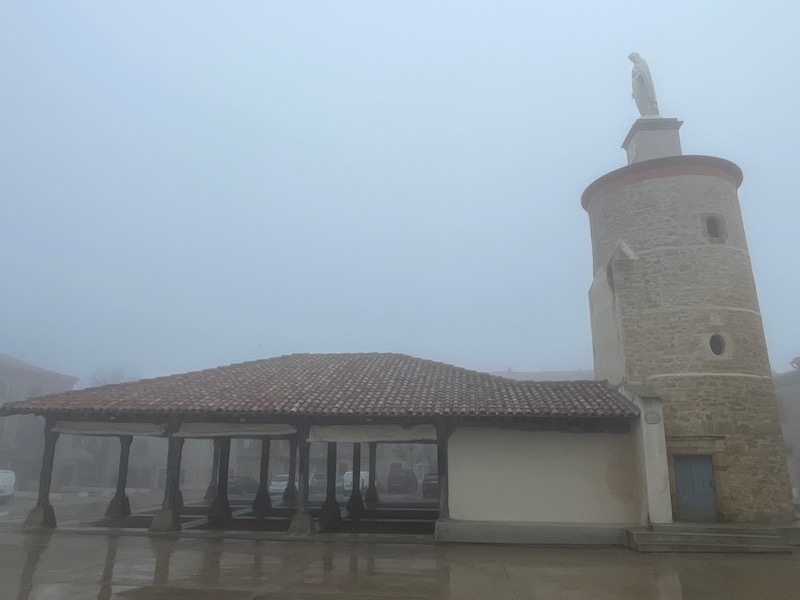
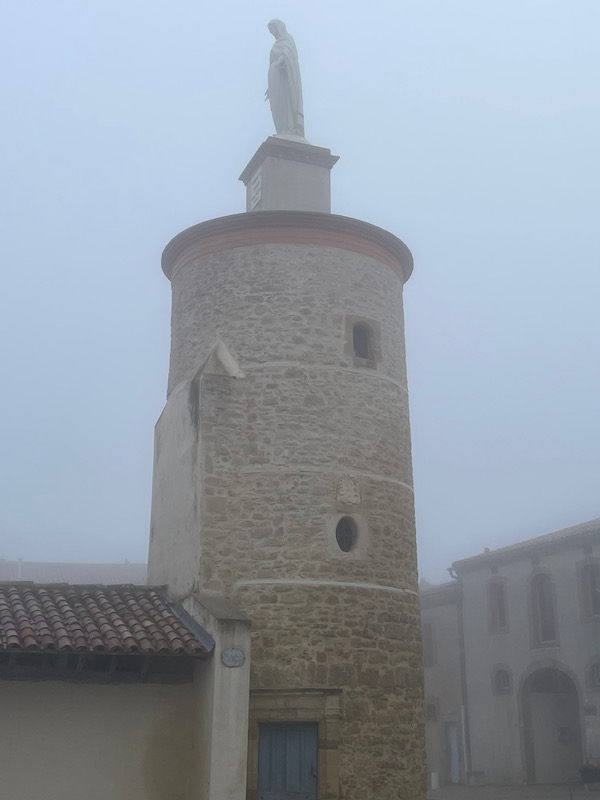
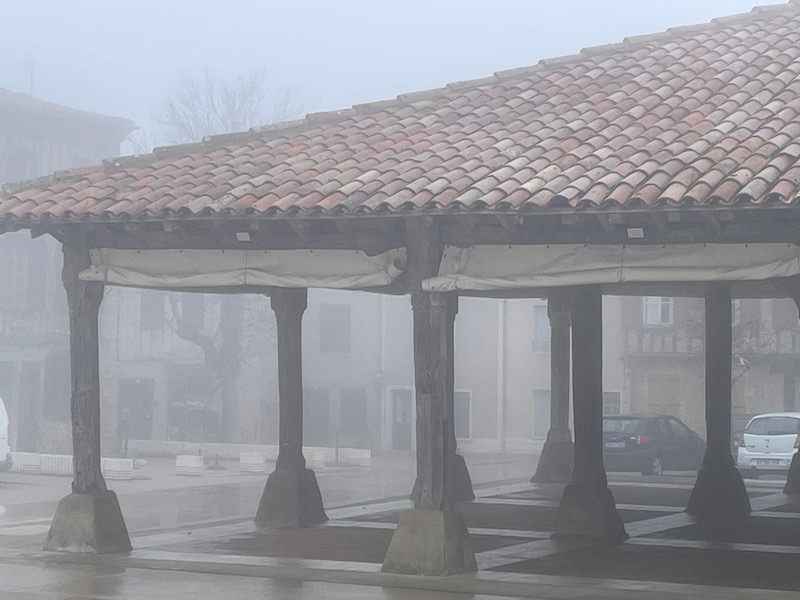
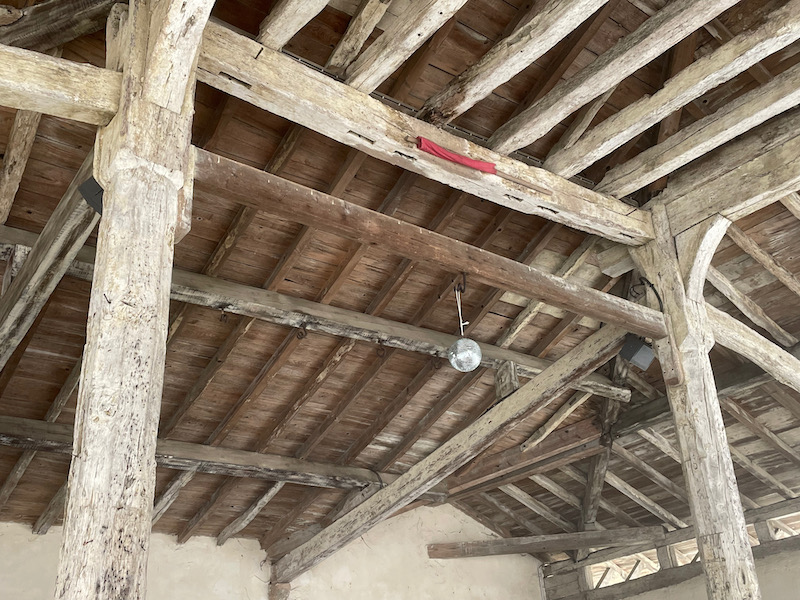
At the far end of town are the remains of the fortification walls from the 13th century and the château. The first mention of a castle is around 1035 and the start of construction of this chateau lasted from 1245 to sometime in the 14th century, when it was transformed from a feudal fortress to a country palace.
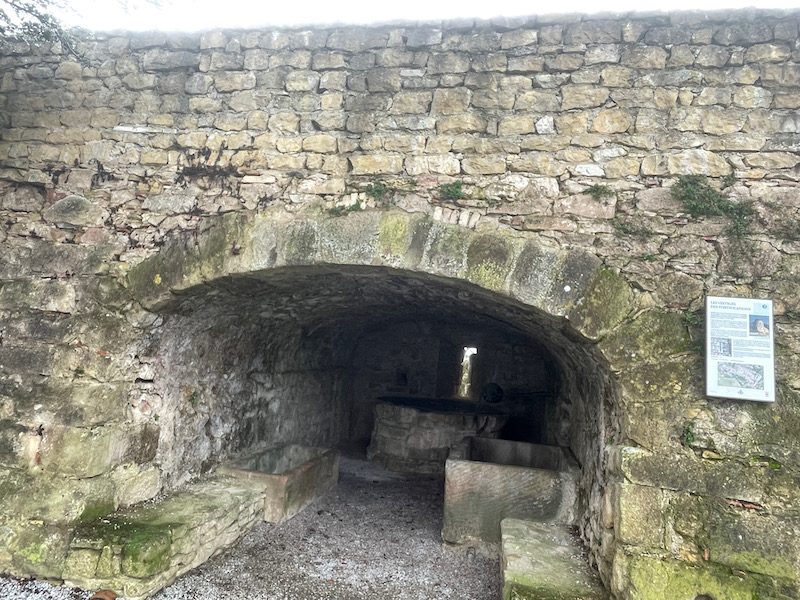
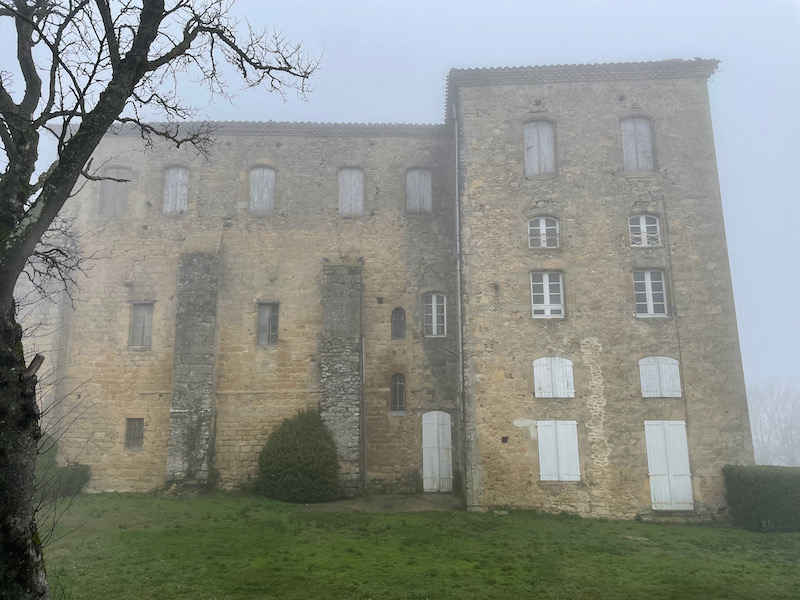
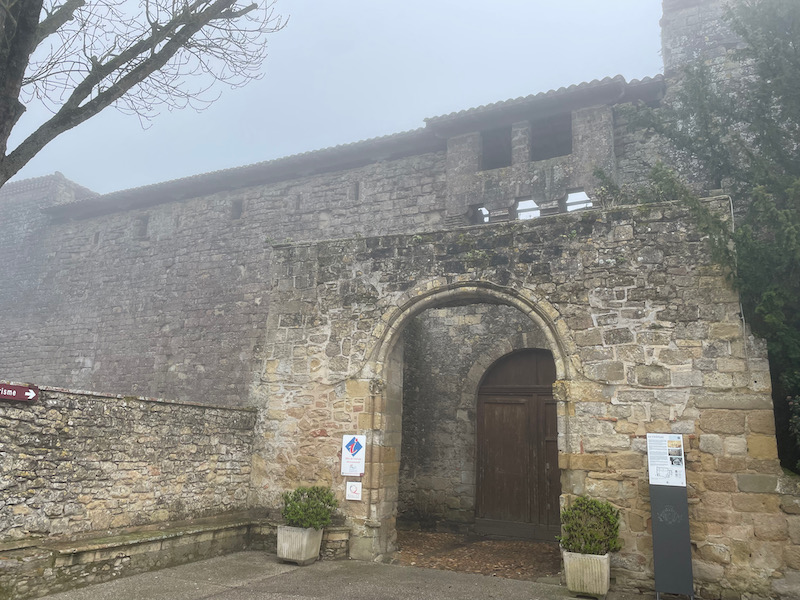
We came back to the car to find two cats had decided it was a good place to hang out!
